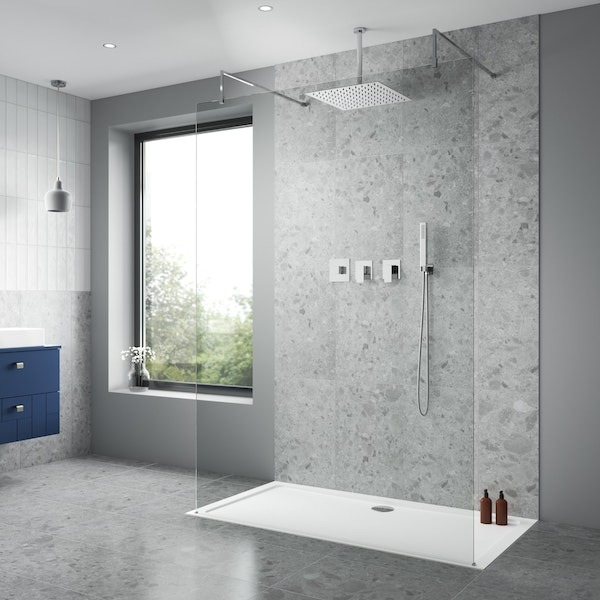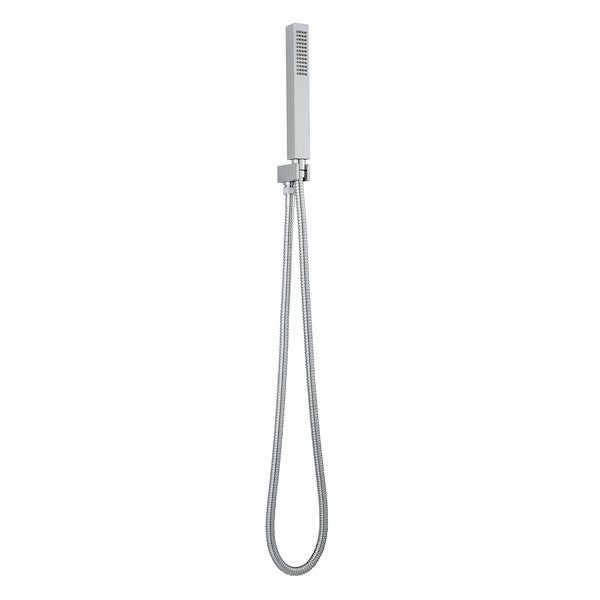
Whether a cold shower in the mornings or a warmer one in the evenings, one cannot deny the rejuvenation and efficiency they feel after a quick shower session. For most people, a nice cold shower brings a fresh start to their day. Sometimes a warm, steaming shower is all you need to relieve the day-long fatigue and tiredness.
While a perfect shower session lets you feel relieved and energetic, nothing spoils the fun as much as the low water pressure. In fact, a limp dribbling shower with fussy pressure will make you feel even more frustrated.
If you want to relive the old experience of a blasting shower, we have lined up ways that allow you to bring your shower pressure back to normal. But before we answer how to increase water pressure for a shower, let’s understand why your water pressure is continuously reducing.
Reasons for Low Water Pressure in Shower
Low water pressure is often related to discrepancies in your plumbing. Unidentified blockages, leak in the pipes, or rust clogging could be a few reasons behind reduced water pressure in your shower. Therefore, the first step toward readjusting the water pressure in your bathroom starts with identifying and rectifying the issue in the plumbing.
If your plumbing lines are connected to the municipal water supply lines, it could also cause low-quality water pressure inside your bathroom. This is mainly because the water main water lines connecting to your region could grow old and rusty, disrupting the normal flow of water. Since it’s out of your hands and jurisdiction, consider calling the local authorities for a maintenance check.
Tips to Increase Water Pressure in Your Shower
Here we have few easy and effective ways to increase the water pressure in the shower.


1. Unclog the Shower Head
While it may be a surprise, the water supplied into your home isn’t free of minerals. It usually contains minute sediments like limescale and other minerals that get clogged up on the shower head.
Even though they are tiny enough to pass through the holes in your shower head, as time passes, they get attached near the openings, thus obstructing the path and flow of water. It doesn’t matter if the water from the main lines is at full capacity and pressure; clogging can reduce the water pressure.
Consider using a used and worn-out toothbrush to clean the mineral build-up. If it is too thick and hardened to be cleared by hand, leave it soaked in vinegar overnight.
2. Relieve the Kinks
Most of the time, your main shower works fine and perfectly, but the handheld shower head connected to the flexible line has low water pressure. If that’s hindering or marginalizing your showering experience, look for kinks in your shower line. The kinks normally include materials or sediments that clog the water line, thus dampening the water pressure when it leaves the hose.
3. Adjust or Replace the Flow Restrictor
The National Energy Act dictates that manufacturers install flow restrictors in shower heads to maintain and control water flow for conservation. While it helps protect and conserve the earth’s natural resources, it significantly impacts customers’ energy bills.
However, if you are someone that loves a blasting jet shower with full force, the restrictor can become a nuisance. It can further minimise the already little flow of water, leaving you with nothing but a dribble. If your shower head is squeaky clean, removing the flow restrictor will help resume the normal flow of water.
4. Watch Out for Leaks
No matter the quality of the pipes or tightness of the joints, plumbing lines are prone to leakage. The lines could be losing water drop by drop, dribble by dribble, and you may not know a thing about it except for the reduced water pressure in your shower.
Leaky pipes can significantly damage your water pressure, take a toll on your energy bills, and affect the foundations of your house – in case the leakage rarely happens, consider visiting your basement since that’s better to do the task before it leads to any disastrous issue.
5. Check the Plumbing Valve
In case you have moved into a new home or have bathroom renovation done in your home, there are chances the main water supply valve is fully or partially closed. Moreover, oftentimes old valves tend to lose their grip and slide close due to the flow of water. Even though it happens rarely, consider paying your basement a visit since that’s the place where the main plumbing valves are located.
6. Install a Shower Pump
Sometimes bathrooms are located far from the main water pump of the building, which causes low water pressure in your shower. Now that’s something you can’t fix with traditional pressure-increasing methods. This leaves you no option but to resort to artificial means of increasing water pressure in the shower.
While it may be the most expensive method, installing a shower pump in your bathroom can help boost the water pressure. If you know plumbing basics, you can easily mount one onto your plumbing lines; otherwise, you prefer hiring a professional plumber.
FAQs about Smart and Effective Ways to Increase Water Pressure for Shower
Here are a few frequently asked questions that you may have in mind.
Can Shower Pressure be Increased?
The water pressure in your shower is generally based on how your plumbing is routed through in the bathroom. It is possible that you can manually increase the shower pressure. And there are various ways to do that. You will first need to find out the real cause of the problem and act accordingly. The possible solutions may range from simply cleaning out the shower head to remove accumulated minerals to change in setting on the water heater.
Does Changing Your Shower Heads Affect Water Pressure?
Yes, it is possible that your choice of shower head may be causing low water pressure. If you believe it is what is causing the problem, then one potential solution is to change your shower head. Depending on the type of shower head you have, it may be restricting the flow of water. A high-quality shower head will have fewer restrictions and allow more water to flow through. This can improve your water pressure and help you get a better shower.


Why is the Water Pressure in my Shower so Weak?
There are a few reasons why your shower water pressure might be weak. It could be because of a clogged shower head or a water pressure regulator that needs to be adjusted. Another possibility is that your water heater isn't providing enough hot water. If you have a tankless water heater, it might need to be descaled. You can also try turning up the water pressure at the main shut-off valve.
How to Make Shower Head High Flow?
There are a few ways that you can make your shower head flow. One way is to purchase a shower head that is designed for high flow rates. Another way is to remove the restrictor from your current shower head. In addition to that you can try to add an aerator to your shower head. Whichever method you choose, you should see an improvement in water pressure and flow.
What to Do if My Shower has Low Water Pressure?
It is important that you first identify the cause of low water pressure. It may be simply due to the shower head, problem in plumbing, or setting of the water heater etc. Few of these problems can be resolved easily, so you may not need to call a plumber. But in case you don’t have a clue and don’t think that it is due to the shower head then it will be a good idea to get professional help.
